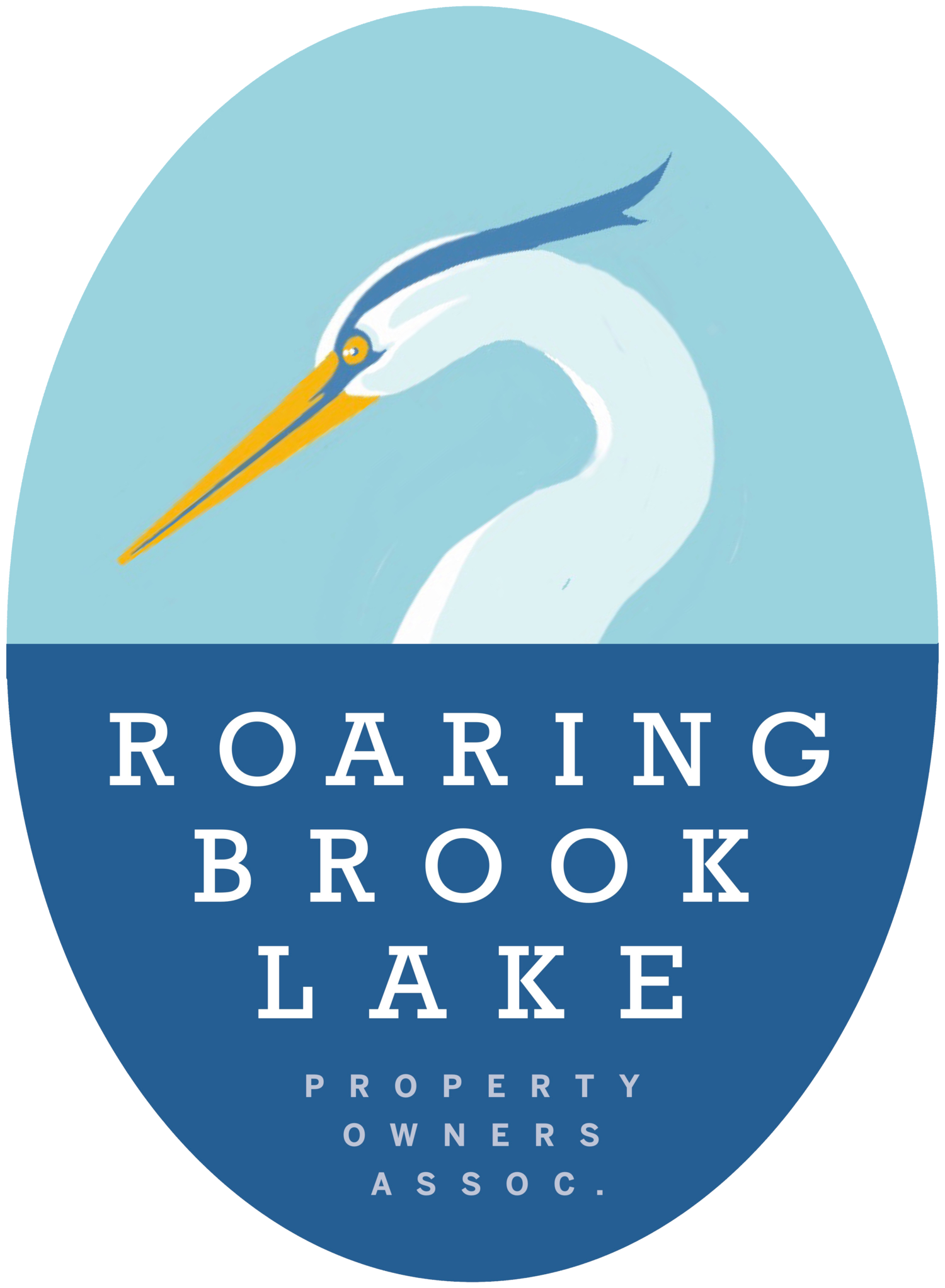Wetland buffer: what is it and why we should care
We all love the lake. Whether we like to swim, boat, or just sit quietly and enjoy the view, the lake enriches our lives. While we are out enjoying the lake, the RBL District’s wetlands are working overtime to protect it. In fact, those swampy wetland areas are arguably the most valuable pieces of real estate in the neighborhood because of their role in supporting life and maintaining a healthy environment. If the wetlands were filled in and developed, they could no longer act as sponges to absorb water when there is a lot of rain. Roads and houses would flood. If the wetlands could no longer filter and clean the water, pollutants would enter the lake. If the wetlands were gone, the spring peepers, herons, and other wildlife that depend on them would not survive. Wetlands prevent flooding, filter the water, and support the lake ecosystem.
We are fortunate that the Roaring Brook Lake watershed (the area that drains into the lake) is mostly wilderness. We also have many wetlands around the lake that act as sponges to soak up water and filter it before it runs into the lake. We don’t have the problems that some lakes do: there are no farms, factories, or towns in the watershed area. With the exception of a small piece of the Taconic highway, the only contaminants that go into the groundwater and the streams that feed our lake are those that we ourselves put there.
Putnam Valley Town law recognizes that our wetlands, streams and lakes are precious resources. Town laws protect wetlands to prevent flooding, water pollution, and other risks to our health, safety and property values. Underlying the town law is the understanding that activity “on wetlands, watercourses and water bodies in one location affect persons and property in other locations.” Certainly we know this already when we see debris floating from one place on the lake to another. The same interconnectedness applies to the streams that feed the lake and the wetlands that cleanse the water on its way to the lake and our wells. If pollution, dumping, filling-in, draining, invasive species or other harmful human activity compromises the streams and wetlands, the lake will feel the effects – and so will we and our property values.
What is a wetland buffer
The wetland buffer establishes a “margin of safety” for the lake, streams and wetlands. The buffer is set by Town Code as 100 feet from the lake, streams, and wetlands. (It is not the same as a “shoreline buffer” which is a narrower strip along the shoreline.)
Do You Have Wetlands and/or Buffer Zones on your Property?
A large percentage of RBL homeowners have wetland resource areas on or near their property. If you plan to do work in a wetland, or within 100-feet of a wetland, a stream, a vernal pool, or the lake, it must be reviewed by the town.
Keep in mind that wetlands do not have to look “wet” or contain water to be protected (see drawing below). If you are unsure whether part of your property is within a wetland area or buffer zone, please call Supervisor Oliverio’s office at (845)526-2121.
What activities are regulated in the Buffer Zone?
Town law regulates activities that disturb wetlands, streams, vernal pools, and the lake. These include application of pesticides, discharge of pollutants, fill, excavation, drainage, vegetation removal, construction of buildings, driveways, or patios, and quite a few other things. For more information, see Town Code, Chapter 144 at: https://ecode360.com/9474400.
It is worth knowing that all tree removal (even dead trees!) within the buffer requires a permit. Trees are invaluable resources. They help prevent run-off and erosion, filter water of harmful nutrients and other pollutants, recharge the drinking water supply, provide habitat for fish, amphibians, and reptiles, and bring cooling shade to the shore edges, helping to reduce toxic algae growth.
It is up to us to protect our homes and the lake for everyone and forever.


